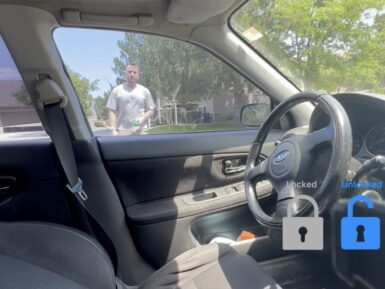
Arduino MKR 485 Shield
Sold outWant to add serial communications to your device using the RS-485 protocol? The Arduino MKR 485 shield will provide the industrial connectivity you need.
Overview
Thanks to this shield, you can now connect your MKR board to any of the industrial systems that using the RS 485 protocol.
The MKR 485 shield is the ultimate expansion that allows MKR boards to connect to almost any legacy industrial system, such as industrial PLCs, controllers, drives and HMIs. Old industrial systems (e.g., machinery, heating systems, and conveyors) can to turned into IoT devices through a serial connection using the MKR 485.
The shield is based on the MAXIM MAX3157 ( Datasheet ) and provides Half / Full Duplex .
Standard operational mode: Half Duplex
Tech specs
| Interface | Serial |
| Circuit Operating Voltage | 3.3 V |
| Transceiver | MAXIM MAX3157 (datasheet) |
| Buck converter | Texas Instruments TPS54232 (datasheet) |
| Vin (screw connector) | 7 V - 24 V |
| Vin (header) | 5 V |
| Compatibilty | MKR size |
| Switchable onboard termination resistor | |
| Operating mode | Isolated Half / full duplex (switchable) |
Conformities
Resources for Safety and Products
Manufacturer Information
The production information includes the address and related details of the product manufacturer.
Arduino S.r.l.
Via Andrea Appiani, 25
Monza, MB, IT, 20900
https://www.arduino.cc/
Responsible Person in the EU
An EU-based economic operator who ensures the product's compliance with the required regulations.
Arduino S.r.l.
Via Andrea Appiani, 25
Monza, MB, IT, 20900
Phone: +39 0113157477
Email: support@arduino.cc
Documentation
OSH: Schematics
The Arduino MKR 485 Sheld is open-source hardware! You can build your own board using the following files:
EAGLE FILES IN .ZIP SCHEMATICS IN .PDFLearn more
Get Inspired
Robot using Arduino Nano 33 BLE Camera Shield.

A lot of newer cars have a really nifty feature called “proximity unlock,” which automatically unlocks the doors when the driver approaches while carrying their key fob. When paired with a push-to-start ignition switch, the driver never has to take their keys out of their pocket. But Nick’s 2004 Subaru STI is too old to have come with that feature from the factory, so he used a couple of Arduino boards to create a DIY proximity unlock system. Car manufacturers need to pay serious attention to security when designing their access and ignition systems, but Nick had a bit more freedom. It is unlikely that any thieves would suspect his car of possessing a feature like this and so they wouldn’t even bother trying to hack it. Nick’s proximity unlock works by evaluating the received signal strength indicator (RSSI) of Bluetooth® Low Energy connection. If all else is equal, RSSI is inversely proportional to distance and that makes it useful for rough proximity detection. An Arduino Nano 33 BLE inside the car unlocks the doors when it has an active BLE connection with an RSSI over a set threshold. It unlocks the doors by shorting the switch with a 12V relay and it receives power from the car’s 12V system through a buck converter. The driver-carried device (equivalent to a key fob) can be either another Nano 33 BLE or Nick’s smartphone. In fact, it can be any device with a BLE adapter, so long as it can connect to the in-car Arduino with the proper device name. Now, Nick can enjoy his classic car and the convenience of proximity unlock.








